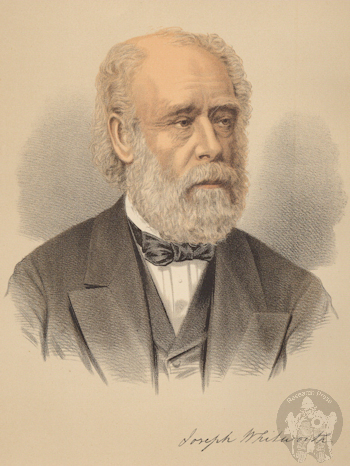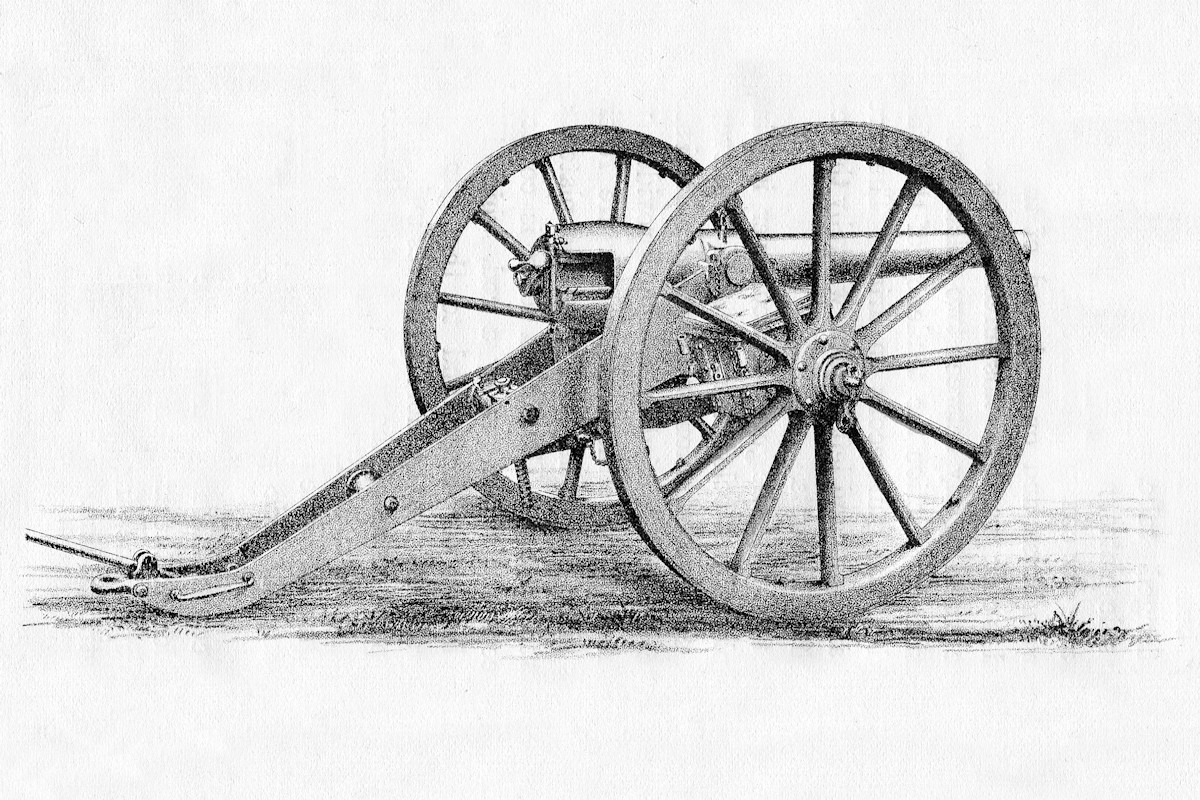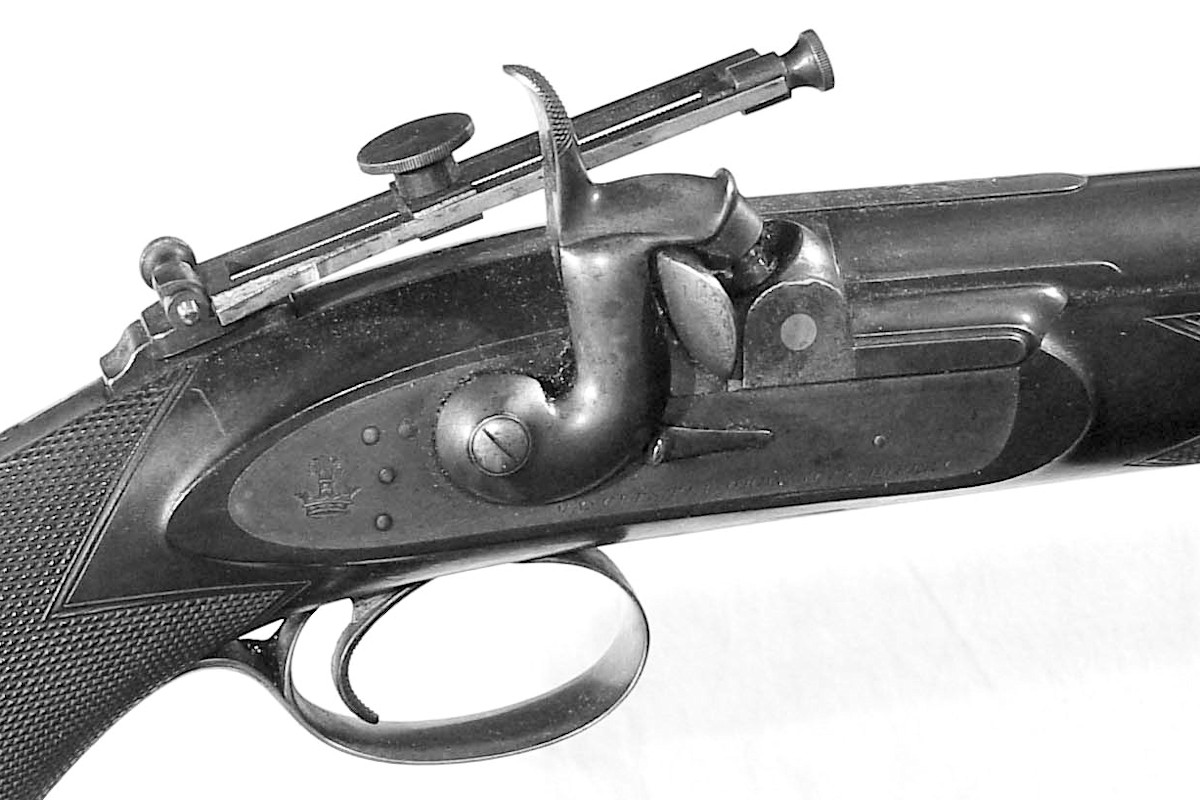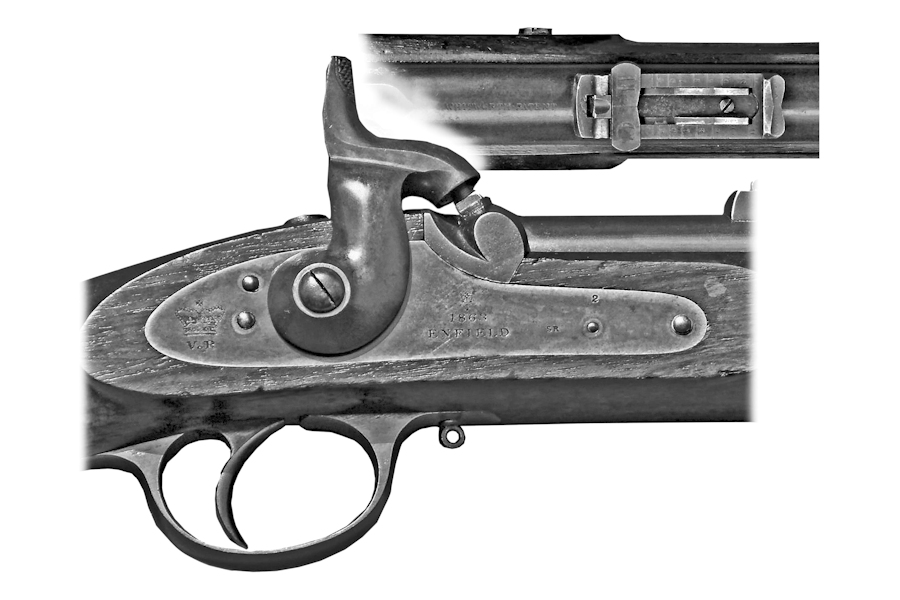You are here: Home > Research > Hex Bore
Engineer > Great Exhibition > Firearms > Honours
This memoir and portrait appeared in ‘The National Portrait Gallery‘, published by Cassell, Petter & Galpin, London, c1878. Four series of portraits, bound in 2 volumes, were published. Each series has twenty full-page colour plates of portraits taken from photgraphs. Each portrait has the prinited signature of the subject. The accompanying texts (referred to as Memoirs) are written in the third person by an unnamed writer, and are on prominent British men from the 1800s.
Sir Joseph Whitworth, Bart. is featured in the Fourth Series.
David Minshall

It has been said by one of our greatest writers on philosophical subjects, that the introduction of famous discoveries holds by far the first place among human actions; and this was most assuredly the judgment of former ages. For to the authors of inventions the ancients awarded divine honours, while to those who did good service in the State (such as founders of cities and empires, legislators, saviours of their country from long-endured quarrels, quellers of tyrannies, and the like) they decreed no higher honours than heroic. And certainly if a man rightly compare the two, he will find that the judgment of antiquity was just. For the benefits of discoveries may extend to the whole race of man; civil benefits only to particular places; the latter last not beyond a few ages, the former through all time. Discoveries carry blessings with them, and confer benefits, without causing harm or sorrow to any. The same writer enlarges on the three kinds, or grades, of ambition, by which the energies of inventors are prompted to exert themselves. “The first,” he remarks, “is of those who desire to extend their own power in their own country, which kind is vulgar and degenerate. The second is of those who labour to extend the power of their country and its dominion among men. This certainly has more dignity, though not less covetousness. But if a man endeavours to establish and extend the power and dominion of the human race over the universe, his ambition (if ambition it can be called) is without doubt both a more wholesome thing and a more noble than the other two.” There are but few people who will not agree with these remarks, and who will not at the same time go further, and allow that in perfecting his manifold inventions the subject of this memoir has been actuated by motives which entitle him to a place in the third, and consequently the highest, of those grades to which reference has been made.
Born at Stockport, on the 21st of December, 1803, Joseph Whitworth commenced his educational career at a school which was kept by his father, at which establishment he remained until he had reached the age of twelve years, when he was removed to Mr. Vint’s academy at Idle, near Leeds, where he continued his studies for a further year and a half. When only fourteen years of age he was placed with an uncle in Derbyshire, who was a cotton-spinner, and continued under the same care for about four years, during which period he acquainted himself with the working of the various machines connected with the business of cotton-spinning. In 1821 he proceeded to Manchester, where, at the works of Messrs. Crighton and Co., and others, he acquired a practical knowledge of the manufacture of cotton-machinery. Leaving Manchester for London about four years later, he spent some time with Messrs. Maudslay, the eminent engineers, and subsequently with Holtzapfel. He also worked with Mr. Clement, who about this time was engaged in constructing Mr. Babbage’s calculating machine.
Returning to Manchester in 1833, Mr. Whitworth commenced business on his own account as a manufacturer of engineers’ tools, thus founding the firm of Joseph Whitworth and Co., a firm which is now known all over the civilised world. At the outset of his independent career, Mr. Whitworth devoted his energies to the attainment of greater accuracy in mechanical work, and his labours were attended with the most satisfactory results. In 1840 he read a paper “On the Preparation of Plane Metallic Surfaces” at the meeting of the British Association at Glasgow, the object of the paper being to show how a true surface, or perfectly straight line, may be produced. “At that time,” writes Mr. Whitworth, in the preface to his “Papers on Mechanical Subjects,” “it was the custom to prepare what were intended to be used as original surfaces (presumed to be true) by grinding them; and I was anxious to direct the attention of those engaged in mechanical pursuits to the inherent defects of the grinding process, and to prove the necessity of adopting the system of correction, by which alone error is eliminated, and surfaces practically true can be produced.” The system described and advocated in this paper was afterwards universally adopted, an entirely new era being inaugurated in the history of mechanical science, and a degree of accuracy rendered possible which had hitherto been considered unattainable. The desirability of establishing a uniform system of screw-threads also engaged the attention of Mr. Whitworth at this period; and when it is understood that at the time referred to almost every engineer had a separate form of thread and pitch; that the nuts made by one firm would not fit the screws made by another, it will be admitted that the subject was one in every way worthy of the time and thought which Mr. Whitworth bestowed upon it. In the following year, 1841, a paper on this important matter was read at the Institution of Civil Engineers, with the result that since that time the system has been generally adopted in this country. It is but just to add that it was only after a considerable amount of research and a large number of experiments, that Mr. Whitworth contrived to arrange a uniform system of pitches, and determined the best form and angle for the thread. He had, however, his reward in the knowledge that his name is inseparably connected with this improvement. In the meanwhile, Mr. Whitworth was continually employed in the devising of new mechanical tools, or in bringing to perfection those which were already in use. His labours were directed, in the first place, to the accuracy of workmanship, and then to the economy of labour. Between 1840 and 1850, Mr. Whitworth produced many valuable improvements and inventions, the most important of which were the duplex lathe, the reversing tool of the planing machine, and the standard gauges of size.


